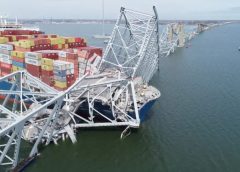April 4, 2024 – When the Francis Scott Key Bridge in Baltimore fell into the water, national media immediately branded the event a “collapse.” South Carolina Rep. Nancy Mace wasted no time in trying to score political points off of the disaster, claiming that there are still old bridges and roads in the U.S. even after the passing of legislation to upgrade them. I mean, as if you can snap your fingers and replace all the bridges. “Look at the $1.2 trillion infrastructure bill that was done a couple of years ago that the left hails as this massive success, but it was mostly Green New Deal, actually, in that bill – $100 billion went to surface transportation which is roads and bridges and of that $110 billion, $70 billion went to public transportation leaving only $40 billion for traditional roads and bridges,” she said. It would be funny if it wasn’t so sad. Part of the blame for fueling comments like that goes to the national media. The bridge did not “collapse.” It was mowed over by a cargo ship. The incident should have never been characterized as a collapse. It was a maritime disaster: an accident. An unprecedented crash. Bridges are not designed to withstand a side collision. No bridge, new or old, can withstand that type of hit. To this day, the media is calling it a collapse. And the mischaracterization of the positive impact of the IIJA goes on.
Stop Calling it a Collapse

